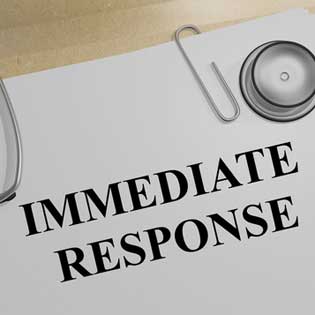Hurricane vs Cyber Breach: Why You Need DRS
November 3, 2017

It’s safe to say that preparing for the next disaster, whether it’s a hurricane or a cyber breach, is keeping a lot of healthcare administrators up at night. That’s probably because the threat vector seems to be increasing, with a higher volume of adverse weather events along with cyber terrorism really upping the ante on our need to stay ahead of the curve.
This blog looks more closely at how “business as usual” could be disrupted in the world of healthcare delivery and how what disaster recovery services are recommended to lessen downtime and mitigate the threat.
Are you ready for a disaster? Get a free assessment…
Naming the Threats
The extreme heat waves spawned by global climate change are increasingly threatening business operations, particularly in coastal cities, according to The Guardian. As the climate is heating, super storms are rolling across inland cities, including Superstorm Sandy that created a slew of challenges for hospitals as far north as New York City.
If you need to put the volume of recent disasters in perspective, check out this chart from the National Centers for Environmental Information to see the billions spent so far this year.
For healthcare practitioners, these events should be the canary in the coal mine; how you recover from adverse weather events will strongly affect your business, whether the delivery network is a large healthcare system or a one-doc family practice.
If the adverse weather doesn’t worry you, the specter of cyber terrorism should. We’ve written repeatedly in the past about how healthcare providers are struggling to mitigate the risks of cyber-attacks this year, and predictions are that these events will increase across all industries. Healthcare IT News released a blog this month that highlights 40 hacks that have occurred in 2017 in the healthcare industry. Payers like Anthem to solo practices to large multi-state systems have all suffered network breaches this year.
The big culprit this year has been ransomware, which is malware delivered by email. These viruses encrypt your data, literally locking computers down until a ransom is paid. This new threat illustrates the importance of disaster recovery services that provide off-site backups of all data along with creating virtual networks that replicate all critical business functions. Since the biggest remedy of ransomware is a backup, these services will help any healthcare provider mitigate the cyber terrorism threat.
The Importance of Disaster Recovery Services
“Recovery time is key in the wake of a disaster – 40% of companies that fail to recover their vital data within three days of an interruption eventually close the doors.” – Iron Mountain
As threats increase, virtually every healthcare industry analyst has renewed their call for providers to create a disaster recovery services model. One of the most crucial pieces of disaster recovery is securing data off-site, and providing cloud-based replication of all operational functions so that the healthcare provider can get back up and running with minimal downtime so that patient services experience few interruptions. There are five steps we recommend for developing a disaster recovery plan, and this applies to any type of business, not just a healthcare provider:
It’s clear that healthcare providers should establish a proactive methodology around disaster recovery services. Manage My Practice has a checklist for small practices wondering where to start the process.
Business continuity starts with disaster recovery services and providers like TOSS C3 that help businesses manage the risks associated with doing business today. Healthcare providers of all sizes can benefit from a security and risk assessment that looks closely at the steps necessary to continue providing care in the event of any disaster, whether a hurricane, cyber breach, or any other threat to your business. Contact us today to find out more. Request a quote…

Subscribe now and stay up to date with News, Tips, Events, Cybersecurity, Cloud and Data Compliance.